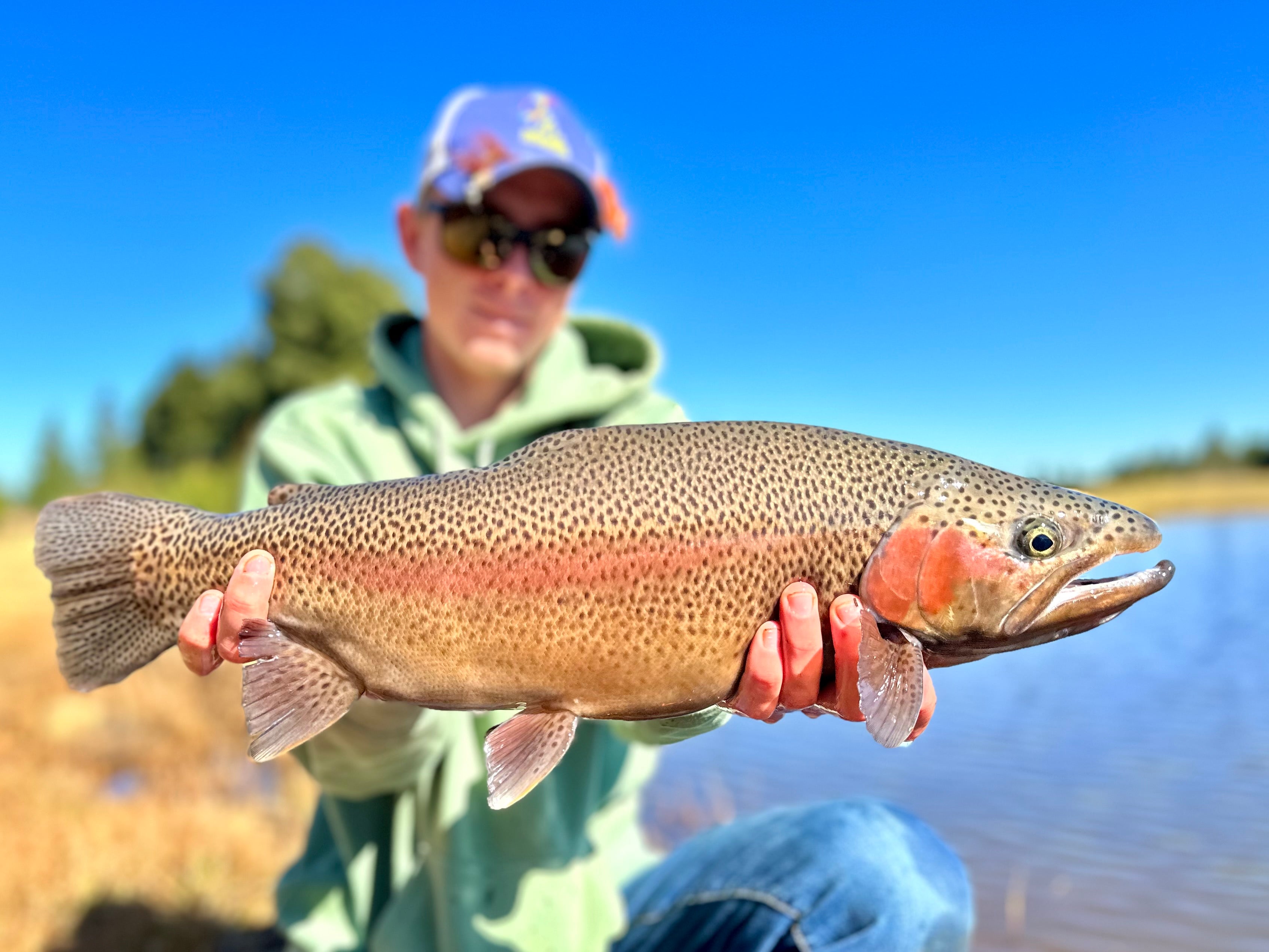Summer can be a tough time of the year when it comes to flyfishing for trout in the stillwaters around Dullstroom , but if you adapt your techniques and fish smart, you might just be surprised how effective one can still be in the warmer months. Like any time of the year, there are pros and cons, one simply has to work around the cons and capitalise on the pros.
What in essence makes fly fishing for trout in summer challenging is the heat. Trout, being from North America and Europe, thrive in cooler waters. Once water temperatures hit 18 degrees Celsius and higher, there is a depletion in oxygen which in turn makes trout lethargic. They stop moving around and typically look for the coolest and most oxygenated water in any dam, whether that be an inlet with fresh, cooler moving water, or the thermocline. Both being ‘feature’s worth focusing your efforts on. The advantage of summer is food. Weed beds become more prolific and insects are more active which results in tons of aquatic life, from dragon and damsel fly nymphs, to emergers, tadpoles and baitfish. This will affect your fly choice and techniques, and when you break it down, the technicalities of retrieve, fly line choice, fly colour and size, all become that much more important.
We all know the term ‘match the hatch’, half of which means being observant, not just for insects hatching but making an effort to look in the margins before you start fishing. If you see baitfish, what size and colour are they? The same applies for your dragons and damsels, you’ll often see dragon fly husks on reeds, another good indication of what size flies to be fishing. If you take time to observe, you’ll be able to narrow down your fly selection, both in type, size and colour. Once you’ve done this, how and where you fish your flies become important.
With less oxygen in the water, you can assume fish will move less. Your retrieve across the board is going to be slower, but where you fish is still important. Dawn and dusk are going to be the best times of the day, especially early mornings around sunrise as the water has had 8 hours to cool down. This will often have fish feeding more aggressively in the shallows, using both the structure and low light to ambush baitfish and fry in the margins. As the sun gets higher, fish move deeper. In dams more than 3 meters deep, you’ll often have a thermocline form. This is a cooler band of water where the fish hold, but rarely on the bottom of the dam. If you’re fishing shallower waters, you can assume the coolest water is on the bottom, but in deeper dams you’re going to have to fish a sinking line and use a countdown method to determine where the thermocline is, once figured out, you’ll begin to pick up fish more consistently. However, where there’s weed there’s food. Look for weedbeds and fish towards them with sinking and intermediate lines. If you can fish parallel to the weedbed, ideally fish dragons and damsels. If you’re casting towards the weedbeds and stripping your fly away, then fish baitfish and tadpole imitations.
One of the most overlooked techniques in summer is fishing a floating line, the key here is wind. Fishing a team of buzzers and nymphs on a floating line allows you to cover two or three water columns by suspending your flies a meter apart. The reason wind becomes important is because you want to be able to cover water with this technique and not just have your flies sit in one spot. Look for wind lines or make sure you’re fishing perpendicular to the wind, thus allowing your line to drift. You can fish your rig either under an indicator or simply use a very slow retrieve to stay in contact with your flies. The same technique can be used by fishing a large terrestrial and a smaller nymph just below your hopper, often drawing fish up to the surface for the dry but more than likely having that fish take the nymph.
For more tips and techniques, pop into Mavungana Flyfishing to for a cup of coffee or a beer this summer.

